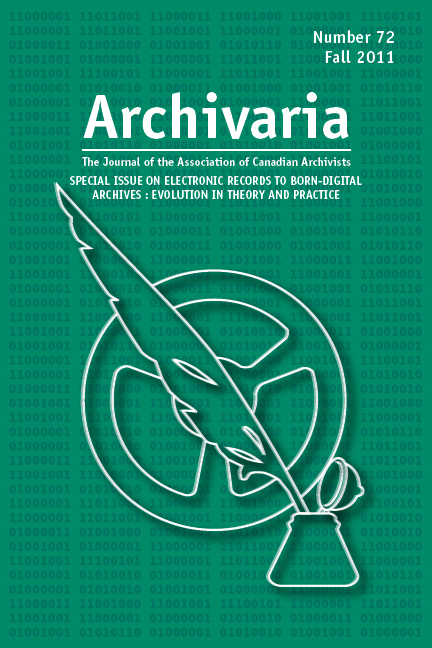Educating for Digital Archiving through Studio Pedagogy, Sequential Case Studies, and Reflective Practice
Abstract
Since 2001 the author has been teaching a graduate course in digital archiving at the School of Information, University of Texas at Austin, as part of a suite of courses on digital archives and recordkeeping, embedded in larger programs of archival studies and preservation studies. This essay outlines the development of this course over time in order to describe the emergence of an approach to digital archiving teaching through active and reflective digital archiving practice, in the context of a laboratory environment including a functional digital repository. There are three major aspects to this approach: 1) a pedagogical method to support students in active learning through carrying out real archiving projects (reflective practice in a mixed skills team setting); 2) a practice aimed at providing experience in testing, developing, and improving preservation methods over time in the context of a working repository (sequential case studies); and 3) a means for understanding and accounting for the evolution of the preservation infrastructure itself over time (the seed/evolve/reseed model). Finally, major elements of course content include the history of both computing and preservation research, methods and resources for researching technology, and methods for assuring the long-term preservation of authentic digital objects.
RÉSUMÉ
Depuis 2001, l’auteure donne un cours de deuxième cycle en archivage numérique à la School of Information de la University of Texas à Austin. Ce cours fait partie d’une suite de cours en archives numériques et en gestion de l’information qui s’insère dans les programmes en études archivistiques et en conservation. Ce texte trace les grandes lignes du développement de ce cours dans le but de décrire l’émergence d’une approche basée sur la pratique active et réflexive pour enseigner l’archivage numérique, et ce dans le contexte d’un environnement de laboratoire qui comprend un dépôt numérique fonctionnel. Trois aspects majeurs se dégagent de cette approche : 1) une méthode pédagogique qui appuie les étudiants dans leur apprentissage actif en leur permettant de compléter des projets archivistiques réels (la pratique réflexive dans le cadre d’une équipe à compétences variées); 2) une pratique qui vise à fournir une expérience en évaluation, en développement et en amélioration des méthodes de conservation dans le contexte d’un dépôt fonctionnel (des études de cas séquentiels); 3) le moyen de comprendre et de prendre en ligne de compte l’évolution même d’une infrastructure de conservation dans le temps (le modèle Seed-Evolve-Reseed). Enfin, les éléments primordiaux du contenu du cours comprennent l’histoire de l’informatique et de la recherche en matière de conservation, les méthodes et ressources pour la technologie de recherche, ainsi que les méthodes pour assurer la conservation à longterme des objets numériques authentiques.
Authors of manuscripts accepted for publication retain copyright in their work. They are required to sign the Agreement on Authors' Rights and Responsibilities that permits Archivaria to publish and disseminate the work in print and electronically. In the same agreement, authors are required to confirm that "the material submitted for publication in Archivaria, both in its paper and electronic versions, including reproductions of other works (e.g. photographs, maps, etc.) does not infringe upon any existing copyright." Authors of manuscripts accepted for publication retain copyright in their work and are able to publish their articles in institutional repositories or elsewhere as long as the piece is posted after its original appearance on archivaria.ca. Any reproduction within one year following the date of this agreement requires the permission of the General Editor.





